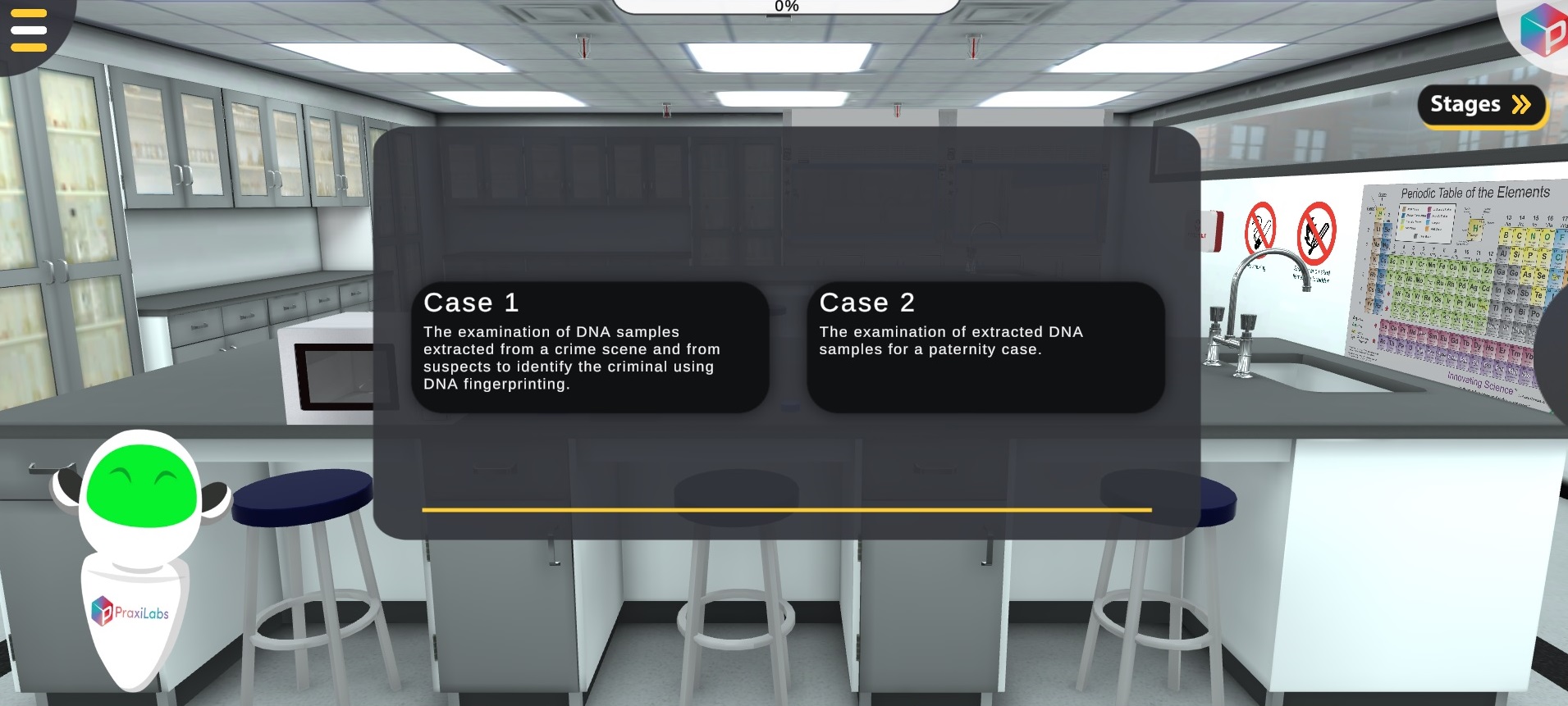DNA Fingerprinting Simulation Using RFLP Gel Electrophoresis
Biology | Molecular Biology | Biochemistry | Genetics | Microbiology






2.5M+
Active Users Worldwide
80%
Improved Learning Retention
60%
Reduction in Laboratory Costs
Scenario one:
Scenario Two:
RFLP Gel Electrophoresis
By the end of DNA fingerprinting simulation, student will be able to:
The rate of migration of a DNA molecule through a gel is determined by the following:
1) size of DNA band (the heavier, the slower)
2) agarose gel concentration (usually 0.8%)
3) DNA conformation (linear/plasmid/etc..)
4) Voltage
5) Electrophoresis buffer.
6) Ethidium bromide: EtBr is positively charged, thus reducing the DNA migration rate by 15%. Other stains for DNA in agarose gels include SYBR Gold, SYBR green, Crystal Violet and Methyl Blue.
EcoRI:
5’ G^AATTC 3’
3’ CTTAA^G 5’
HindIII:
5' A ↓AGCTT 3'
3' TTCGA ↑A 5




